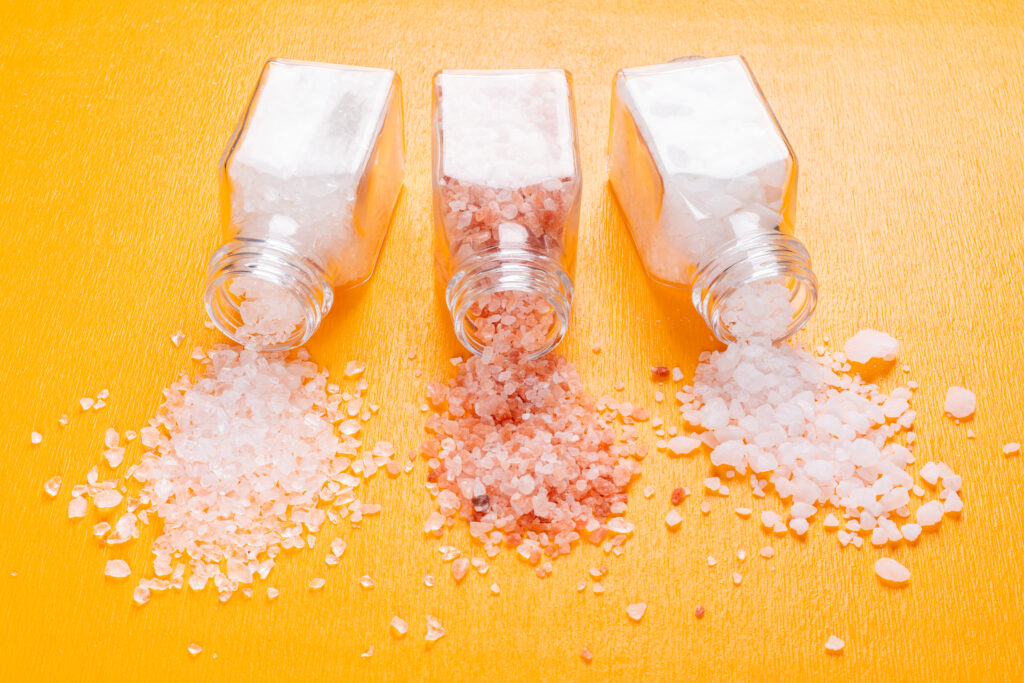
Fact vs. Fiction
It’s easy to add new ingredients or products to your shopping list when friends, influencers, and others say you should. It’s harder, however, to know how such changes may or may not benefit you, or even why they’re suggested. But understanding the facts around nutrition trends and recommendations is important for your health and your budget. Here we’re highlighting four nutrition trends/popular ingredients. They may already be in your kitchen, or maybe they’ve piqued your curiosity, and you’d like to learn more.
Apple Cider Vinegar
What to know
Apple cider vinegar (ACV) is made from fermenting the sugar in apple to create acetic acid. You’ve likely seen it at your local market, as it’s often used in salad dressings and other dishes. Acetic acid is considered beneficial for lowering blood sugar, improving lipid levels, aiding weight loss, and even enhancing skin health. Look for ACV that contains “mother,” a cloudy fermented substance made from proteins and beneficial bacteria. You can either ingest ACV as a beverage (heavily diluted with water) or use it in your cooking. Alternatively, there are many ACV supplements.
The facts
Let’s break down how ACV may be beneficial, starting with reducing the risk of heart disease. Experts agree that the best way is to follow a heart-healthy diet and engage in exercise. If you’re thinking about adding ACV to your regimen, research shows that it may help:
- lower total cholesterol
- improve fasting blood glucose levels
- lower LDL cholesterol
More investigation is needed, however, on all these possible benefits. It’s also important to be aware of potential interactions with medications for diabetes, blood pressure, and other conditions. If you are taking medications, it’s essential to discuss ACV with your physician before consuming it.
As for the other ways that ACV may be helpful, small studies have shown that it enhances weight loss. However, to decrease acne or eczema, it seems that ACV is not impactful and may even cause skin irritation.
Coconut Oil
What to know
Coconut oil has become a popular choice for cooking and baking. If you’ve spotted it on supermarket shelves, you’ve probably noticed its white, opaque color. Unlike liquid oils made from vegetables or seeds, coconut oil is solid due to its high saturated fat content. This may make it a good choice for certain recipes, for sure. But it’s important to remember that saturated fats are aligned with increased LDL (“bad”) cholesterol levels.
The facts
The saturated fat in coconut oil is partially composed of lauric acid, a fatty acid that’s believed to lower cholesterol. However, since coconut oil is so high in saturated fat, it’s not the best way to consume lauric acid. Not surprisingly, the best approach is moderation. Choose coconut oil when it will enhance a recipe or to create a particular texture in a baked good. Otherwise, continue to use vegetable and seed oils.
White vs. Whole Wheat
What to know
To understand the difference between white flour and whole wheat flour, we first need to recall the composition of wheat. A whole grain seed is made from three edible parts (bran, endosperm, and germ). When these parts remain intact, we consider the flour to be whole grain. Refined grains (white flour) are created when the seed is trimmed down to just the endosperm. Without the bran and germ, refined grains are low in protein, fiber, and important vitamins and minerals. To improve this, refined grains are “enriched” with nutrients that we may otherwise be lacking in (such as folic acid).
It’s also important to recognize the difference between wheat and whole wheat products. Wheat products are simply those made from wheat flour. Whole wheat products, however, are made from whole grain flour. While both are brown in color, whole grain flour is higher in protein and fiber. To ensure you’re consuming whole wheat bread, review the ingredient list. Whole grain wheat breads will always have “whole wheat flour” as the first ingredient.
To incorporate more whole wheat products in your diet, you can also look for white whole wheat breads. For homemade baked goods, try working with white whole wheat flour that earns three Guiding Stars for best nutrition. White whole wheat offers all the benefits of red whole wheat (the brown color you’re familiar with). It just isn’t as dark in color.
The facts
Breads, crackers, pasta, and more made from whole wheat flour are high in protein, fiber, and other micronutrients. If you’re trying to control your caloric intake or improve your blood sugar control, whole grain products are recommended.
Sea Salt vs. Himalayan Salt
What to know
Himalayan salt is a naturally pink salt found near the Himalayan mountains. Sea salt is made from evaporating the water from ocean water (or saltwater lakes). Both contain trace minerals and are less processed than the table salt found in most saltshakers. Also, there’s no iodine in Himalayan salt, and it’s only minimally found in sea salt. This could possibly lead to an iodine deficiency among people who only consume Himalayan or sea salt.
The facts
Many people believe that Himalayan and sea salts are superior and offer health benefits. However, there is very limited research to support this. The only “benefit” of these salts is that they offer more minerals than table salt (though this is minimal). For reference, it’s important to remember that all forms of salt contain 40% sodium. Just one teaspoon of salt (any variety) contains about 2,300mg of sodium. People with hypertension or heart disease should consume closer to 1,500-1,800mg per day. Others can safely consume up to 2,400mg daily.